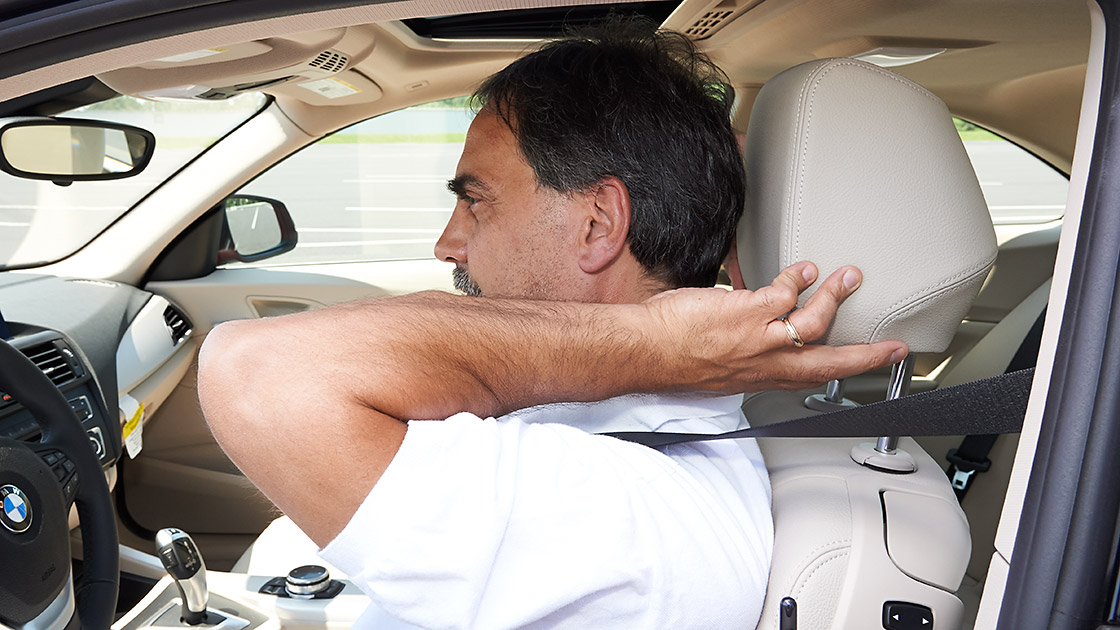Good head restraints reduce injuries by 11 percent
November 10, 2015

One countermeasure continues to make a measurable difference when it comes to preventing neck strains and sprains when an occupant's vehicle is rear-ended in traffic, a new IIHS-HLDI study of insurance claims indicates. Seat/head restraint combinations that earn the top rating of good in IIHS tests reduce injury claim rates by 11 percent compared with vehicles with poor-rated seats/head restraints. What is more, women and younger occupants appear to be enjoying the biggest benefits.
The analysis updates and expands on prior research by IIHS and HLDI indicating that seat/head restraint combinations that earn good ratings in IIHS tests reduce the chances that drivers will sustain neck injuries if their vehicles are rear-ended (see "Neck injury risk is lower if seats and head restraints are rated good," March 15, 2008). IIHS rates vehicles good, acceptable, marginal, or poor based on both front-seat head restraint geometry and test results. IIHS added a dynamic test in 2004.
A decade ago, more than half of the seats/head restraints IIHS evaluated were rated poor and only 9 percent were rated good. Now, 95 percent of 2015 models are rated good, and none are rated poor. This is largely due to the Institute's ratings program and an upgraded U.S. regulation requiring front-seat head restraints to be higher and closer to the back of people's heads in all new vehicles as of September 2010.
"The latest findings show that seat/head restraint combinations that rate good in IIHS evaluations are helping to reduce the overall injury rate in crashes," says David Zuby, IIHS chief research officer and one of the co-authors of the new study.
Analysts examined an insurance claim database of more than 600,000 rear-impact crashes to determine the likelihood of an associated injury claim. Results were based on 2001-14 model year cars and SUVs using property damage liability and personal injury protection claims. Property damage liability covers damage caused by the insured vehicle to someone else's vehicle or property. Personal injury protection coverage is sold in states with no-fault insurance systems and covers injuries to occupants of the insured vehicle regardless of who is at fault.
The injury-reduction benefits were greatest for good-rated seats/head restraints. Those with acceptable or marginal ratings had injury rates that were 4.4 percent and 3.7 percent lower, respectively, than seats/head restraints rated poor.
Zuby points out that the database doesn't contain information on exactly who in the vehicle was injured — for example, whether they were the driver — or the type of injury. Prior studies indicate that neck sprains and strains, or whiplash, are the most frequently reported injuries to insurers. Most often these injuries occur in rear-end collisions, but they can happen in other types of crashes, too.
When a vehicle is struck in the rear and pushed forward, occupants' torsos move forward with their seats. If a person's head isn't supported by a head restraint, the head lags behind the torso, and the differential motion causes the neck to bend and stretch. The higher the torso acceleration, the more sudden the motion, the higher the forces on the neck, and the more likely a neck injury is to occur.
The key to reducing whiplash injury risk is to move the head and torso together. To accomplish this, the geometry of a head restraint has to be adequate — high enough and near the back of the head. Then the seat structure and stiffness must be designed to work in concert with the head restraint to support an occupant's neck and head, accelerating them with the torso as the vehicle is pushed forward. That's why good head restraints are so important.
Analysts broke down benefits by the gender and age of the rated driver on the insurance policy and examined rear crashes that resulted in more-severe injury claims (higher than $2,000). The gender and age analysis is based on the characteristics of the rated driver, the person assigned to the vehicle for insurance purposes but not necessarily driving at the time of a crash.
Women fared better than men in the study, with lower injury rates for good, acceptable and marginal-rated seats compared with poor-rated seats. For males, only good-rated seats were associated with statistically lower injury rates. Injury rates were 13 percent lower for women and 9 percent lower for men in vehicles with good-rated seats/head restraints.
This greater reduction in injuries for females is encouraging since earlier studies have shown that neck injuries are more likely among women in rear impacts than men.
Rated driver age also affects injury outcomes. In the study, good-rated seats had lower injury rates than poor-rated seats in vehicles with drivers in age groups 15-24, 25-44 and 45-64. Drivers ages 15-24 had the largest reduction at 20 percent, followed by ages 45-64 at 11 percent, and ages 25-44 at 10 percent.
The results for more serious injuries followed a similar pattern among gender and age groups. Looking at crashes involving claims of $2,000 or more, analysts found 16 percent fewer insurance claims were filed for neck injuries among females in vehicles with good-rated seats/head restraints compared with people in vehicles with poor seats/head restraints. Looking at age groups, drivers 25-44 years old and 46-64 years old had the largest reductions in injury rates when comparing good-rated seats/head restraints and poor-rated seat/head restraint combinations.
Estimated change in injury rate compared with poor head restraints
By rated driver gender
Estimated change in injury rate compared with poor head restraints
By rated driver age
More than half of 2005 models were rated poor.
Now 2015 models are overwhelmingly good.